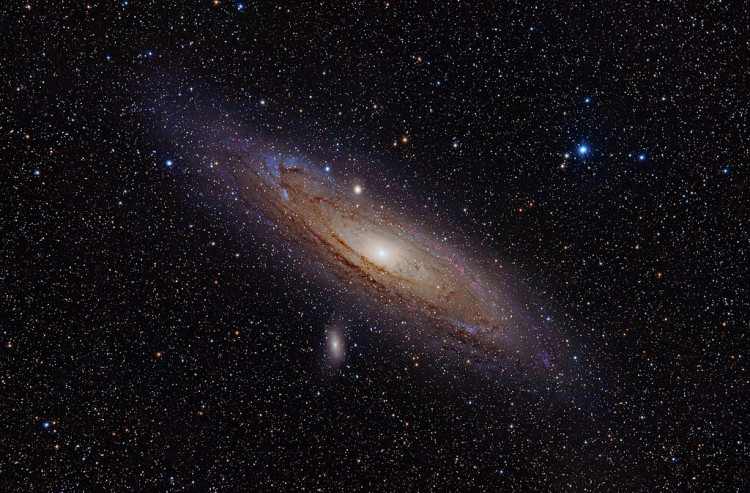The Andromeda Galaxy is the farthest object from the Planet, making it a good test subject to study these vast combinations of gas and stars. Now NASA's Hubble Space Telescope in a recent analysis measured Andromeda's halo, the gas ring that surrounds the galaxy, in unparalleled detail.
On the celestial scale, the Milky Way and Andromeda are really close, and they're getting even closer. Andromeda is inching into our planet at a pace of about 250,000 miles per hour. According to NASA figures, that's 2000 times quicker than fastball. The two galaxies are currently on a collision course caused by their gravitational power. In around 4.5 billion years, they will finally merge.
Andromeda's halo serves to bring both time and distance into context on the galactic scale: These recent charts show that the halo stretches from the galaxies about 1.3 million light-years - about halfway to our Milky Way. This means Andromeda and Milky Way are "bumping," as NASA has described.
"Understanding the huge halos of gas surrounding galaxies is immensely important," said Samantha Berek, co-investigator on the recent observations. "It's full of clues regarding the past and future evolution of the galaxy, and we're finally able to study it in great detail in our closest galactic neighbor."
It's not easy to watch the halo. The halo of Andromeda is composed of a heavily ionized gas that does not emit radiation. The research team then had to look at the light from 43 quasars, very bright and active galactic nuclei, well beyond Andromeda, in order to detect it. They also studied how the Andromeda halo absorbs the light produced by the quasars and how the absorption varies in various areas.
The huge halo of Andromeda includes an inner shell and an exterior shell. The inner shell stretches to approximately half a million light-years.
Although the Andromeda halo was previously observed, it never was in such precision. The recent results indicate its complexity. In fact, these findings may be the most extensive analysis of a halo around a galaxy to date, and the photos are spectacular.
This is a genuinely remarkable discovery because we have knowledge about the halo of the Andromeda galaxy not only in one or two lines of sight but over 40. The idea of a galaxy halo beyond our own Milky Way is groundbreaking.
A paper describing the new findings has been published in The Astrophysical Journal.




